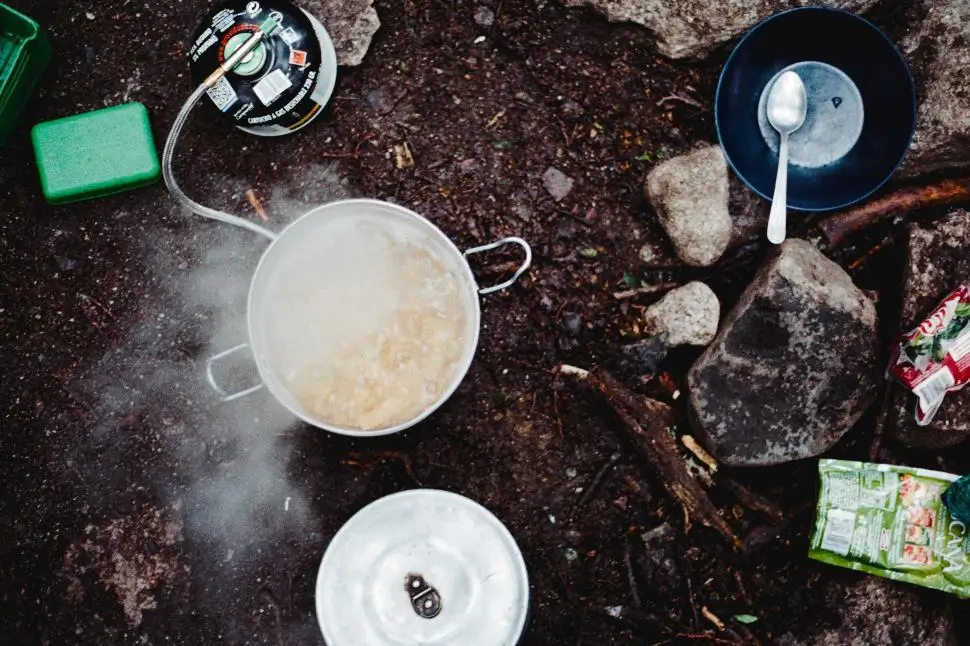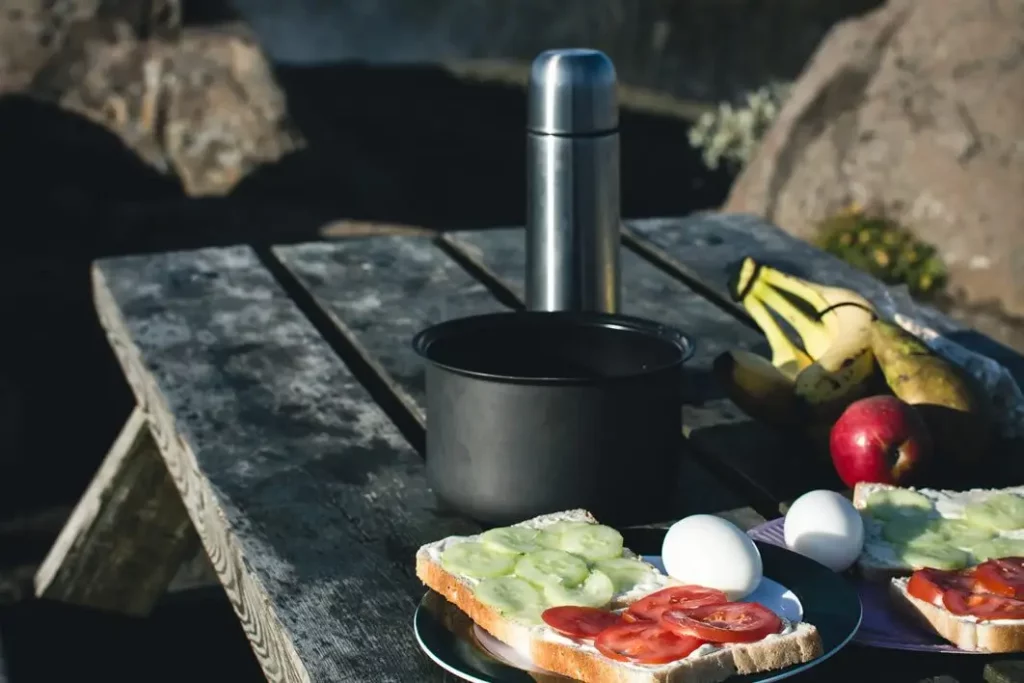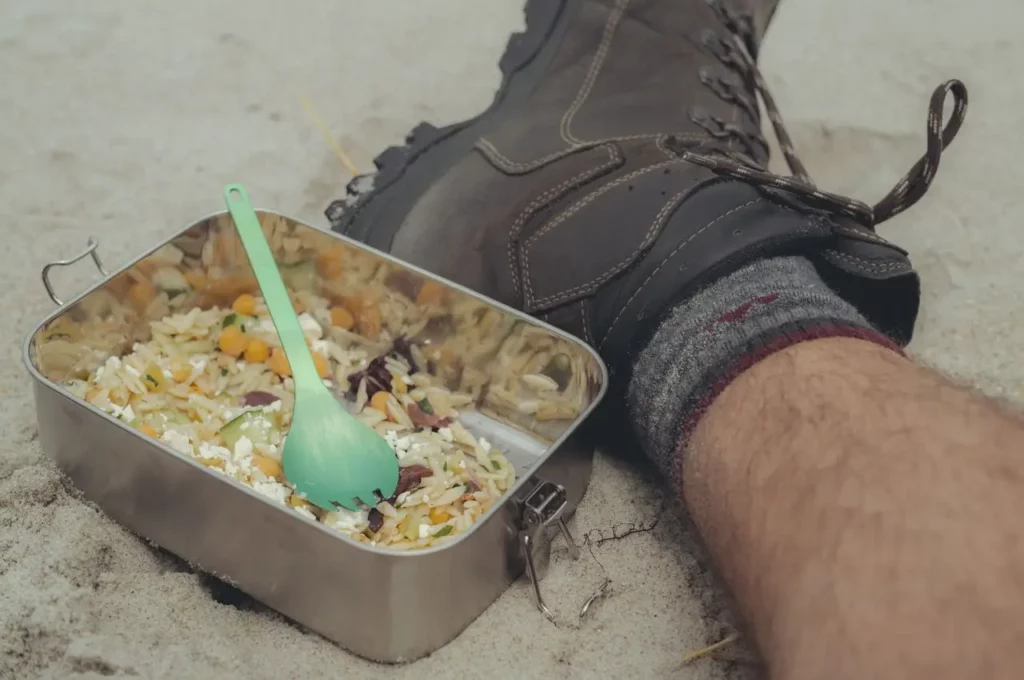What Top Mountaineers Eat to Stay Strong on Every Climb
When you’re high above sea level, every step takes effort – and what’s in your stomach can make all the difference. Whether you’re trekking up a local peak or tackling a multi-day summit, proper nutrition is as essential as your boots or backpack.
In this guide, we’ll walk you through what to eat before, during, and after your climb to keep energy levels high, muscles strong, and recovery fast. Because in the mountains, your fuel is your power.

Table of contents
Before the Climb: Building your energy reserves
During The Climb: Keeping Energy Steady
After The Climb: Recover, Replenish, Rebuild
Building Stamina and Endurance for Alpine Climbing
Why Mountain Nutrition Should Never Be an Afterthought
Final Words: Eat Like You Climb – Smart, Steady, and Intentional
Before the Climb: Building your energy reserves
Goal: Load up on sustainable energy and prep your body for the physical effort ahead.
About 2–3 hours before your climb, focus on complex carbohydrates, moderate protein, and a touch of healthy fats. Carbs are your body’s preferred fuel during physical activity, while protein supports your muscles, and fats help slow digestion for longer-lasting energy.
Good pre-climb meal ideas:
- Oatmeal topped with banana, nuts, and a drizzle of honey
- Whole grain toast with avocado and boiled eggs
- Brown rice with tofu or chicken and steamed vegetables
If you’re starting early and can’t stomach a big breakfast, aim for a light carb-based snack 30–60 minutes before climbing – like a banana, an energy bar, or dried fruit.
Tip: Avoid sugary cereals or greasy breakfasts. They may cause a quick energy spike followed by a crash – exactly what you don’t want on the trail.
During The Climb: Keeping Energy Steady
Goal: Maintain blood sugar levels, stay hydrated, and prevent fatigue.
Climbing burns 300–600+ calories per hour, depending on the altitude, terrain, and your pace. Your body needs a steady stream of fuel, especially if you’re ascending steep paths or facing harsh weather.
Ideal trail snacks:
- Trail mix (a mix of nuts, seeds, dried fruit, and a bit of dark chocolate)
- Peanut butter wraps or nut butter sachets
- Hard cheese and whole-grain crackers
- Energy bars or gels (low in added sugar)
- Dates or dried mango slices
Every 60–90 minutes, aim to eat 100–200 calories. Your body can’t process large meals during intense activity, so small, frequent snacks are the way to go.
Hydration Tip: Drink small sips of water every 15–20 minutes. At high altitudes or in cold weather, you may not feel thirsty, but dehydration creeps in silently and affects your stamina and cognition. Add electrolytes if you’re sweating heavily or on a multi-hour trek.
Cold weather hack: Store your water bottle upside-down (the top freezes last) or use insulated covers to prevent it from freezing.

After The Climb: Recover, Replenish, Rebuild
Goal: Repair muscles, replenish energy stores, and support your body’s recovery.
After reaching your goal and coming back down, it’s tempting to crash on the couch or celebrate with junk food. But your body just worked hard, and it needs proper refueling to bounce back and avoid soreness or fatigue the next day.
Within 30–60 minutes post-climb, eat a meal or snack rich in carbs and protein (ideally in a 3:1 ratio).
Smart recovery meals:
- Grilled salmon or chicken with sweet potatoes and steamed greens
- Lentil stew with quinoa and a side of avocado
- Whole grain pasta with tomato sauce, vegetables, and turkey meatballs
- A protein shake with banana, oats, and almond butter
Also, focus on hydrating well and replenishing lost minerals with magnesium- or potassium-rich foods (spinach, pumpkin seeds, bananas, etc.).
Bonus tip: A warm herbal tea with honey and ginger can help soothe inflammation and relax your body after long climbs.

Why Mountain Nutrition Should Never Be an Afterthought
Skipping meals or relying on processed snacks alone can lead to:
- Altitude sickness
- Mental fog and slower decision-making
- Muscle cramps and joint fatigue
- Poor recovery and higher risk of injury
In contrast, a good nutrition strategy:
- Makes your entire mountain experience safer and more enjoyable
- Boosts your endurance and energy
- Enhances focus and reaction time
- Supports muscle repair and immune function
Final Words: Eat Like You Climb – Smart, Steady, and Intentional
Nutrition isn’t just about food! it’s part of your mountain mindset. Just like you prepare your gear, map your route, and check the weather, fuel your body with purpose. Whether you’re on a one-day hike or a multi-day expedition, smart eating can turn a tough climb into a powerful, unforgettable adventure.
